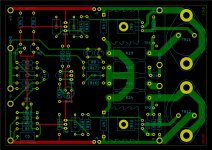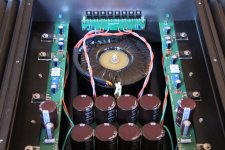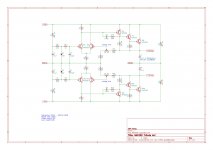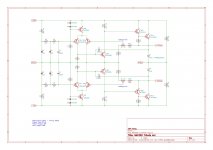... for some unknown reason, it is even quieter when the pcb are not fixed firmly.
I guess it's microphony but I can not explain it.
Yes, this must be microphonics, but from what? There are no ceramic capacitors, no large film capacitors, and no inductors. There aren't even any Al electrolytics which might have dodgy construction.
The bias pot? I don't think I've heard of microphonic trimmers, but maybe possible? (But even so, the bias voltage isn't particularly critical, so this seems unlikely.)
Maybe it's actually some sort of inductive coupling. In other words, the board vibrates and moves some components back and forth through the magnetic field of the transformer?
Huggygood/Nikola/Ultima/Jeff, have any of you built the P3A? What do you think of the amp? How do you like it? It is like Naim, different with the rest of the pack.
I've never worked on this project before, but a friend did it years ago.
Detail and soundstage are not really at the nth power but it is very balanced musically and with a convincing and open sound.
Particularly suitable for speakers with good efficiency and not very demanding as Impedance Module.
Power supply is important for almost any amplifier. But unlike common circuits, compensations ala Naim is intolerant of power supply variation. The question is how did you dial in the right voltage? Is it exactly as shown in the schematic?
I agree fully and with absolute conviction on the fundamental importance of the stage of power supply, at least equal to that of the amplification stage, here are those that after several attempts and experiments I have implemented on my clone NAIM:
A) Dual low impedance linear power supply with four double fast rectification diodes for the Driver stage and BJT's Power stage:
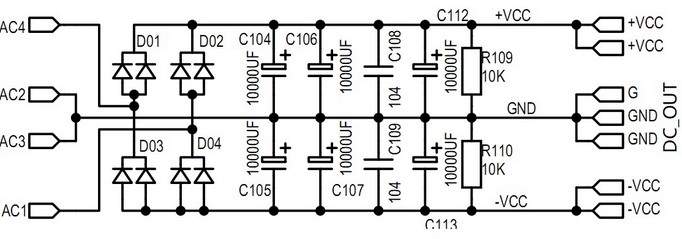
B) Adjustable dual stabilized power supply for Differential input stage and VAS stage:

The power transformer is a 600 VA with 30-0-30 Vac outputs and 10 Amperes of current on each power rail, selected and sized according to the SOA - Safety Operating Area of the BJT's of power 2SC5200.
Last edited:
The important main advantage of a separate power supply for the Differential and VAS stages, regardless of its type, is the separation from the large variations in current and voltage that occur in the power stages, making it "cleaner".
So linear, stabilized or even inductive and C-L-C as I intend to experiment in the future, can be fine and it becomes interesting to evaluate the results on the basis of personal musical tastes.
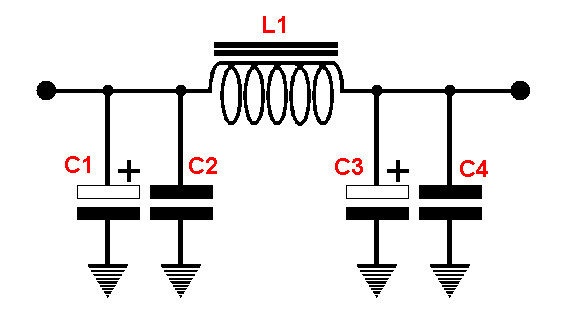
But it's very important, always distinct and separate.
So linear, stabilized or even inductive and C-L-C as I intend to experiment in the future, can be fine and it becomes interesting to evaluate the results on the basis of personal musical tastes.

But it's very important, always distinct and separate.
it's one of the things I wanted to try on this circuit someday.
I got two coils of very good quality, one of 1.8ohm 40mH and the other of 2.9ohm 47mH for this project.
there is no time, i reconditioned two plinius ma102 and when i saw how was mounted the power supply, i had a revelation.
1 power transformer by polarity
2 stages of voltage by power transformer
and a coil on each polarity on the supply reserved to the stage ampli in tension, inverter, drivers.
I got two coils of very good quality, one of 1.8ohm 40mH and the other of 2.9ohm 47mH for this project.
there is no time, i reconditioned two plinius ma102 and when i saw how was mounted the power supply, i had a revelation.
1 power transformer by polarity
2 stages of voltage by power transformer
and a coil on each polarity on the supply reserved to the stage ampli in tension, inverter, drivers.
Detail and soundstage are not really at the nth power but it is very balanced musically and with a convincing and open sound.
Particularly suitable for speakers with good efficiency and not very demanding as Impedance Module.
Interesting that you found it to have not so good detail and soundstage. I thought it has good ones but i'm not so sure. Coz even different bias current will change the sound a lot. And i didn't listen to the original schematic long enough because i didn't like it. But I was impressed. Isn't it similar to the Naim.
How do you judge how good a power supply this is?I agree fully and with absolute conviction on the fundamental importance of the stage of power supply, at least equal to that of the amplification stage, here are those that after several attempts and experiments I have implemented on my clone NAIM:
A) Dual low impedance linear power supply with four double fast rectification diodes for the Driver stage and BJT's Power stage:

it's one of the things I wanted to try on this circuit someday.
I got two coils of very good quality, one of 1.8ohm 40mH and the other of 2.9ohm 47mH for this project.
there is no time, i reconditioned two plinius ma102 and when i saw how was mounted the power supply, i had a revelation.
1 power transformer by polarity
2 stages of voltage by power transformer
and a coil on each polarity on the supply reserved to the stage ampli in tension, inverter, drivers.
That's good.
I have been using for many years the CLC filtering solution in the construction of my tube preamps with enormous satisfaction in terms of musicality that compared to the stabilized solution, zeroes any form of feeeback in dynamic mode of operation, in the power supply of the delicate stage of preamplification.
And as already said in my previous posts, it is no coincidence that I am going to try this solution in the future for the differential input stage and the VAS stage of the NAIM clone.
However, I would like to suggest, also taking into account the relative dimensions and considering the absorbed current values, an inductor of at least 3/5 Henry as inductance value.

How do you judge how good a power supply this is?
I believe that apart from the careful dimensioning in terms of Power and Capacity, the goodness of a power supply stage is all about the quality of the electrolytic filtering capacitors (always paralleled with a plastic film and/or polypropylene capacitor to compensate for the parasitic inductance) and even more with rectification diodes.
The ultrafast diodes must be used with extreme care because of the spurious harmonics they generate at the time of switching and that can seriously compromise the sound of an audio electronics.
But I certainly strongly suggest the double diodes, even of the fast type, which strongly reduce the internal dynamic resistance of the entire power supply stage, giving a "fast" sound and great performance and control in the bass.
Small and apparently marginal tweaks, but I can guarantee that they involve significant if not really great improvements on the sound.
Member
Joined 2009
Paid Member
I think separating the power supply for the front end of the amplifier and giving it some extra care is the best engineering approach. The front end is most often a Class A amplifier with less than perfect PSRR and can benefit from thinking of it in this way.
What you won't have, is a Naim amplifier. I found that there were subtle reasons for keeping the front end and output stage on the same rails in another project, a clone of the AKSA 55.
For diodes - well you can 'slow' them down with series resistors, emulating a Kenotron rectifier. Maybe consider using an EZ81 tube! You can also make a choke loaded rectifier to greatly smooth out the charging spkes which will give you 0.9 x the Vac of the secondary. Use a separate power transformer to isolate from the brutal charging spikes of the output stage power supply. A snuber on the transformer secondary is also helpful.
What you won't have, is a Naim amplifier. I found that there were subtle reasons for keeping the front end and output stage on the same rails in another project, a clone of the AKSA 55.
For diodes - well you can 'slow' them down with series resistors, emulating a Kenotron rectifier. Maybe consider using an EZ81 tube! You can also make a choke loaded rectifier to greatly smooth out the charging spkes which will give you 0.9 x the Vac of the secondary. Use a separate power transformer to isolate from the brutal charging spikes of the output stage power supply. A snuber on the transformer secondary is also helpful.
I use the fast ultra-soft FREDs (with C-RC snubbers) in my class A amps.
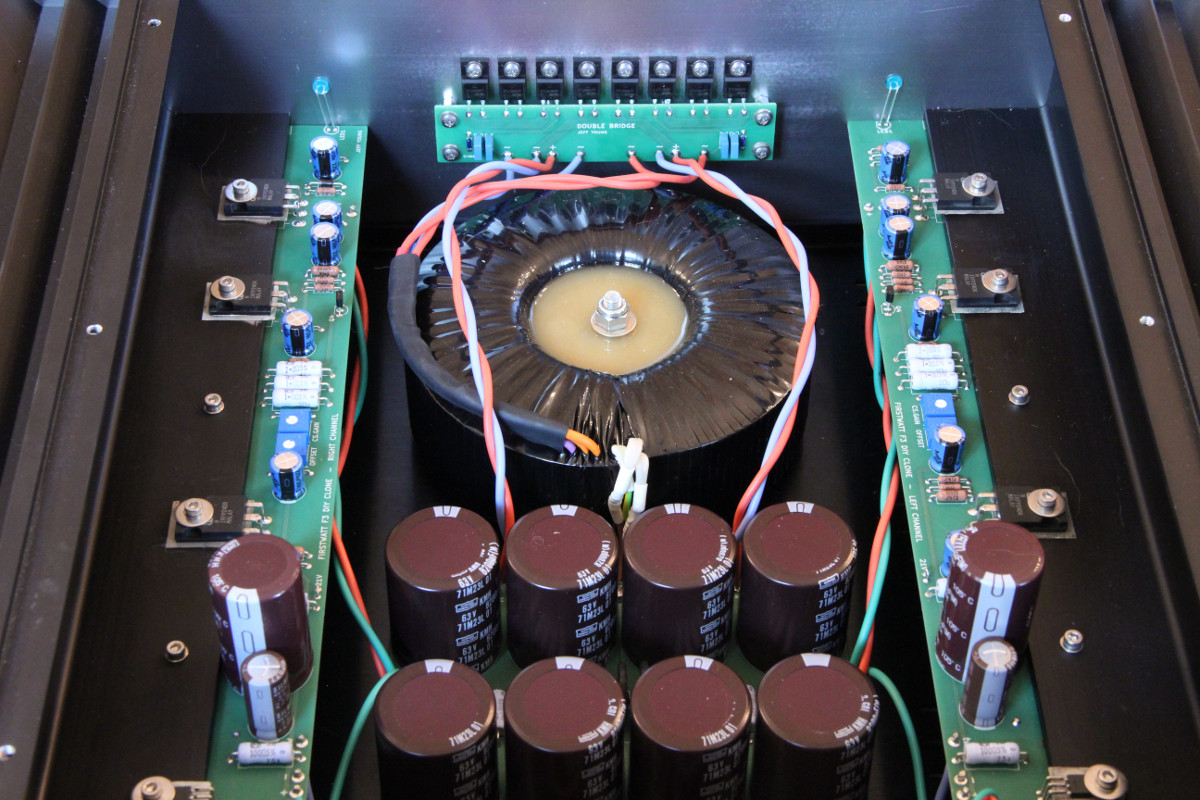
I might try the same with the NAP250, but my first builds will be with two versions of the NAP250 regulator (one a la JV and the other "upside down" to reference the VAS off of ground instead of the dirty rail).
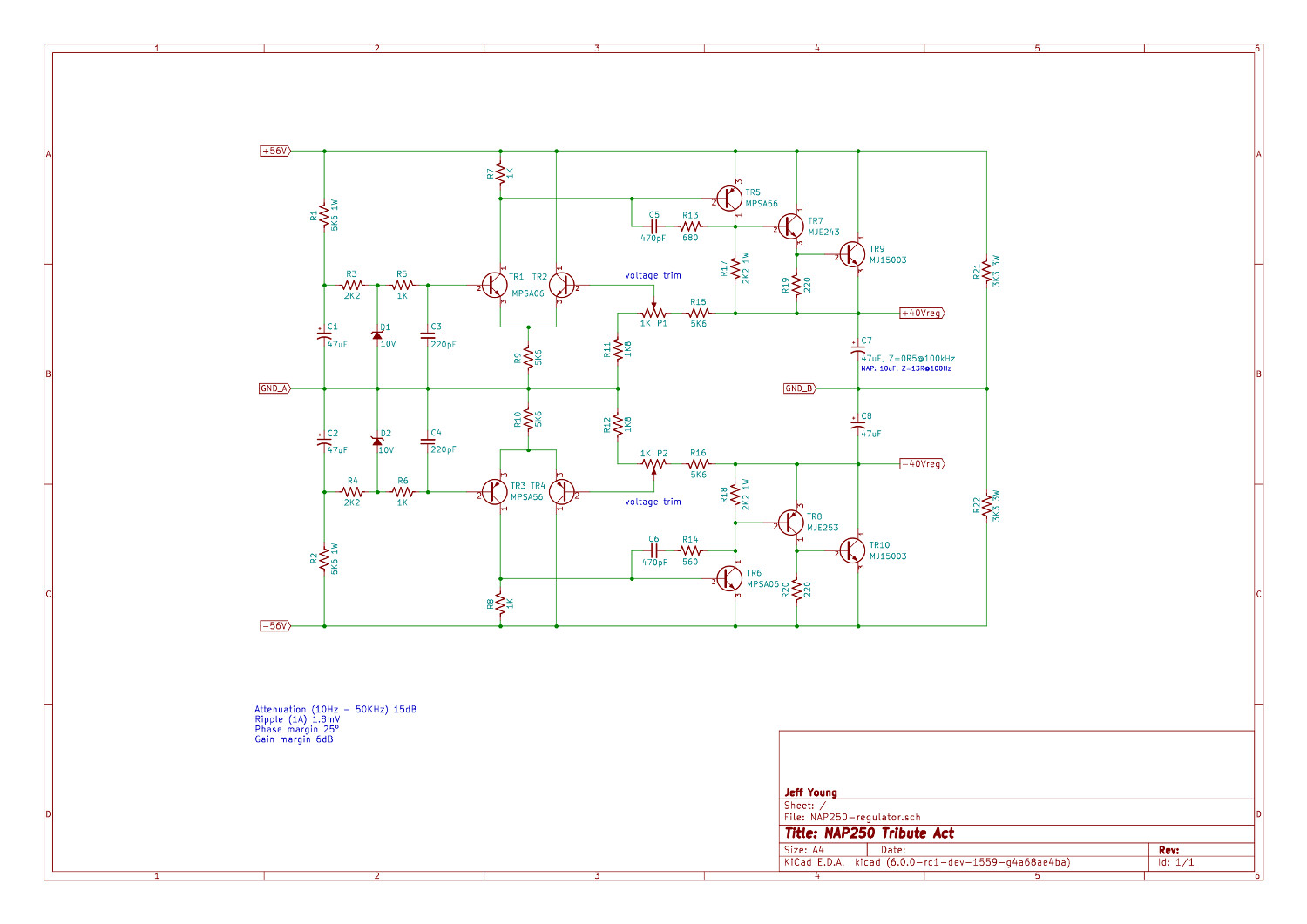
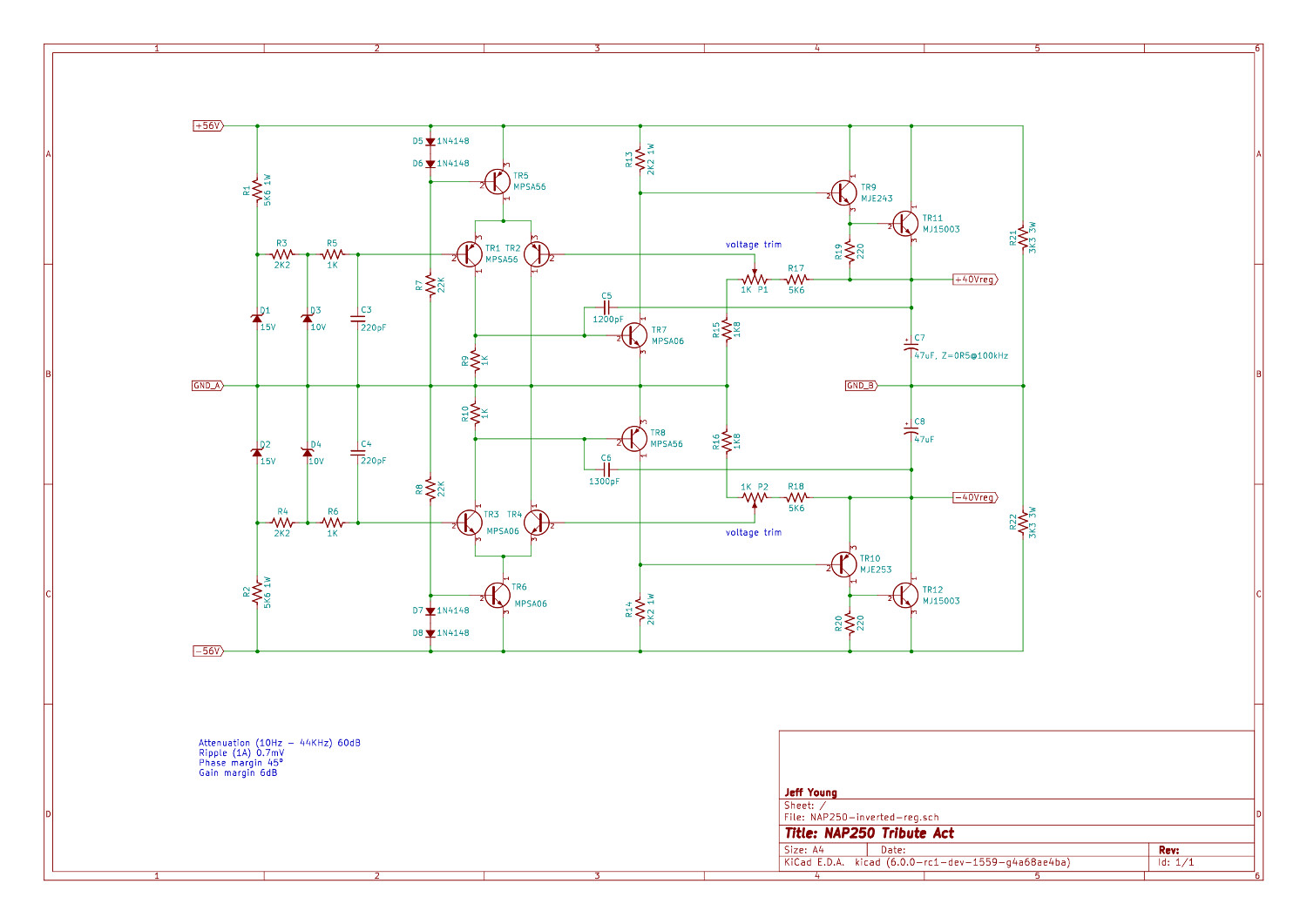
I might try the same with the NAP250, but my first builds will be with two versions of the NAP250 regulator (one a la JV and the other "upside down" to reference the VAS off of ground instead of the dirty rail).
Attachments
if this amp works as well as it is beautiful to watch, it must be wonderful to hear!
I build my bikes as you build your amps and I spend weeks to reduce the electric beam to the simplest and with the best way so that they are almost invisible.
I have the greatest respect for your work, bravo!
I build my bikes as you build your amps and I spend weeks to reduce the electric beam to the simplest and with the best way so that they are almost invisible.
I have the greatest respect for your work, bravo!
- Home
- Amplifiers
- Solid State
- NAP-140 Clone Amp Kit on eBay
